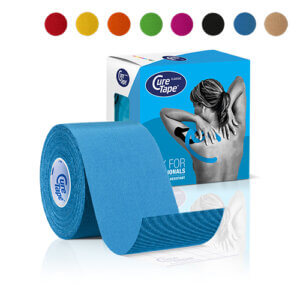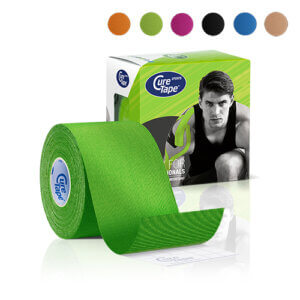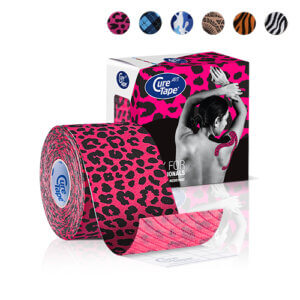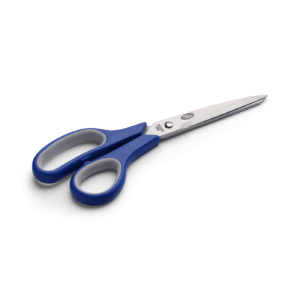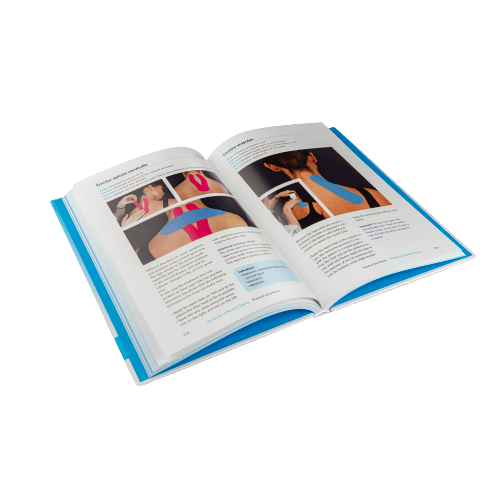On this page, you’ll learn how Medical Taping is applied to shin splints and find an instructional video demonstrating the taping of shin splints step by step. Shin Splints is a collective term for various conditions affecting the shins, such as shin splints, shin discomfort, irritation, and shin bone overuse. These are troublesome conditions that cause pain to the front of the shin bone. They are often experienced by runners, athletes, walkers, and team sports players. A “modern” name for Shin Splints is Tibial Stress Syndrome. On this page, we describe the various shin conditions and provide an instructional video on one of the treatment options.
Get started with these items to tape shin splints
How do shin splints occur?
Shin splints can be caused by problems with the muscles, muscle attachments, the bone membrane or the bone itself. It is usually a combination of factors, and the problems often arise from overburdening. For this reason, it is important that a therapist finds out what exactly the cause is and which structures are influencing the complaints. Kinesiology taping can then be part of the treatment plan. Taping improves the blood circulation and reduces pain, which in turn restores function and enables faster recovery.
Video on how to tape shin splints and medial tibial stress syndrome
What shinbone injuries are common?
Inflammation of the periosteum
The pain experienced is due to an overloading of the attachment point of the posterior tibial muscle caused by the foot rolling excessively inward (overpronation). When pressure is applied to the bone surface through palpation, it elicits pain, which is exacerbated by weight-bearing activities. Initially, the pain typically arises during physical activity, but if the condition persists, it can become chronic over time.
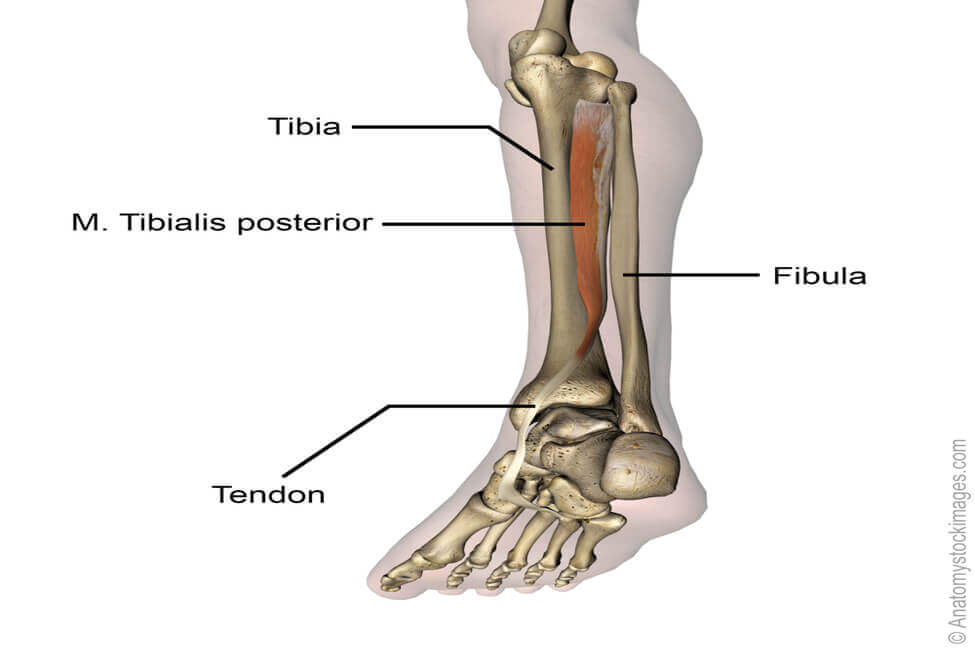
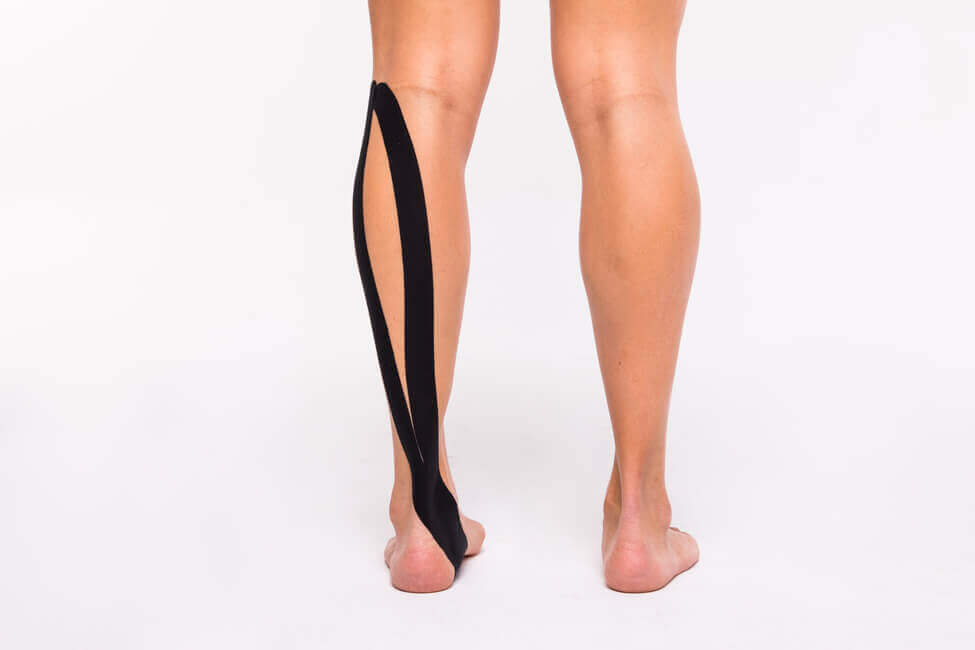
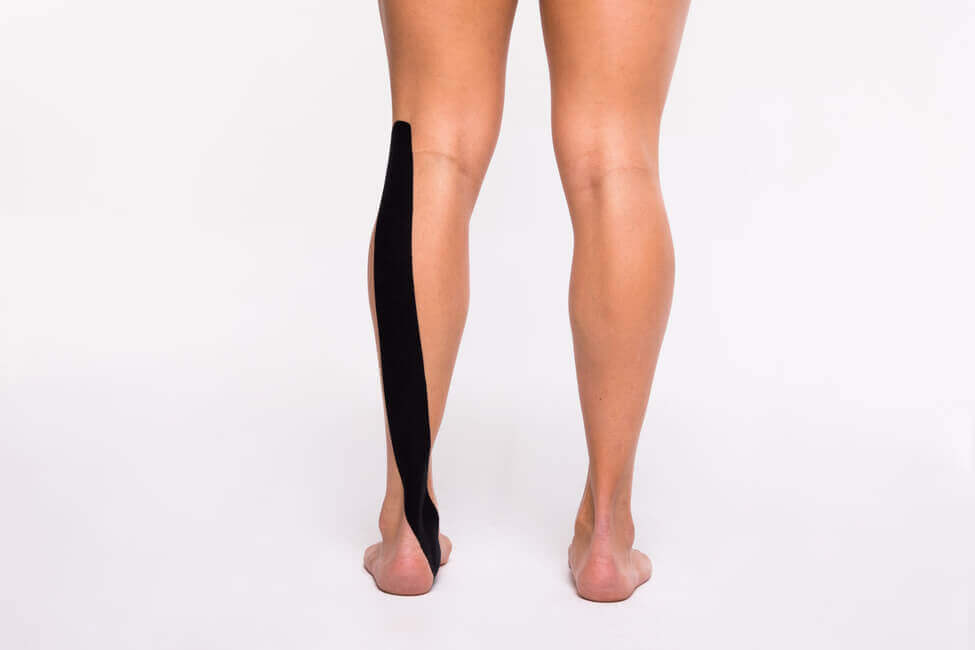
Instructions for professionals
A sedative Y or I tape can be applied with a slight stretch (10-15%) to the posterior tibial muscle to reduce strain on the attachment of the muscle that supports the foot arch. The tape follows the fascial attachment at the tibial edge.
Instructions for self taping (non-professionals)
You can use a tape, shaped like a Y or I, with a gentle stretch (10-15%). Apply it yourself over the muscle at the inside of your lower leg, where it supports your foot’s arch. Make sure to follow the edge of your shin bone with the tape.
– Tendonitis due to a difference in leg length or a foot deformity.
A difference in leg length or a foot deformity puts more stress on the muscles and tendons, resulting in inflammation.
– Compartment syndrome (lodging syndrome)
A rapid extreme increase in muscle mass (often of the tibialis anterior muscle, located at the front of the lower leg) causes increased tissue pressure and disturbs the blood flow. Pain is usually located in the anterior compartment of the tibia (front part of the lower leg bone). When strained, there is a pressing, stabbing pain accompanied by cramping and swelling of the area. The skin may be shiny and feel warm.
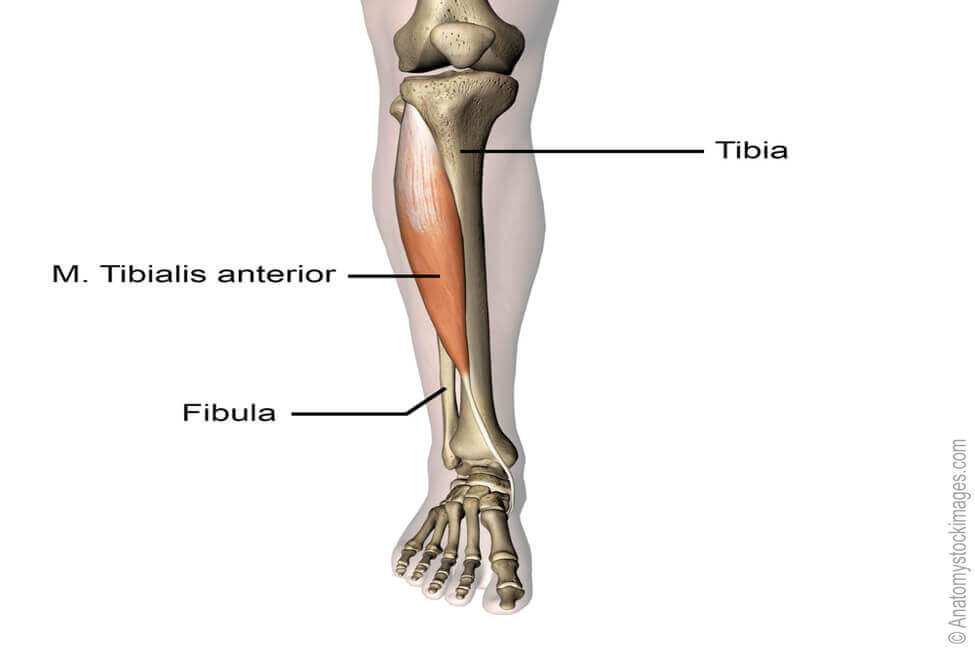
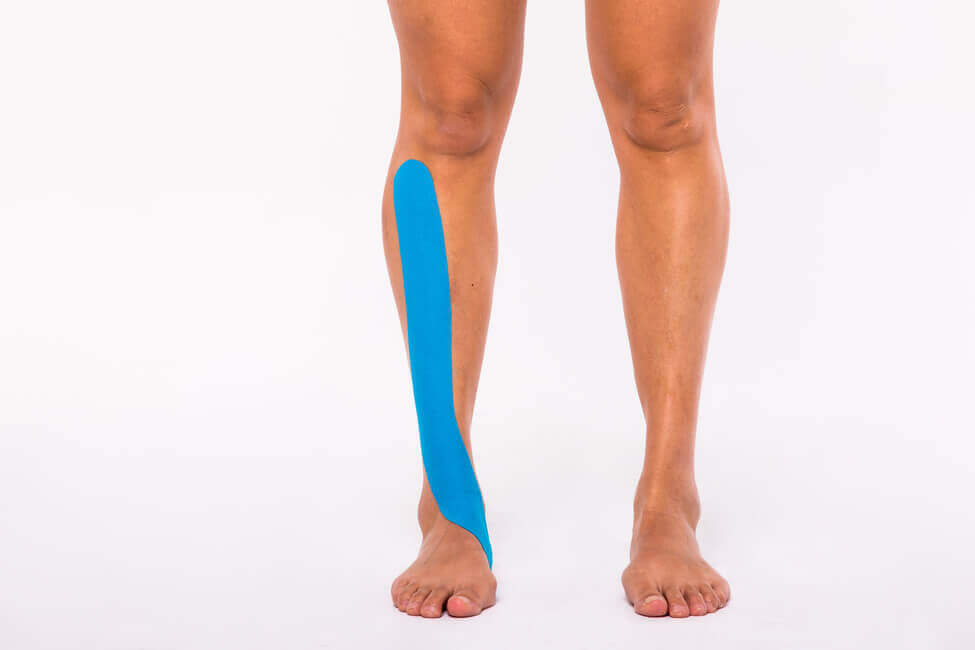
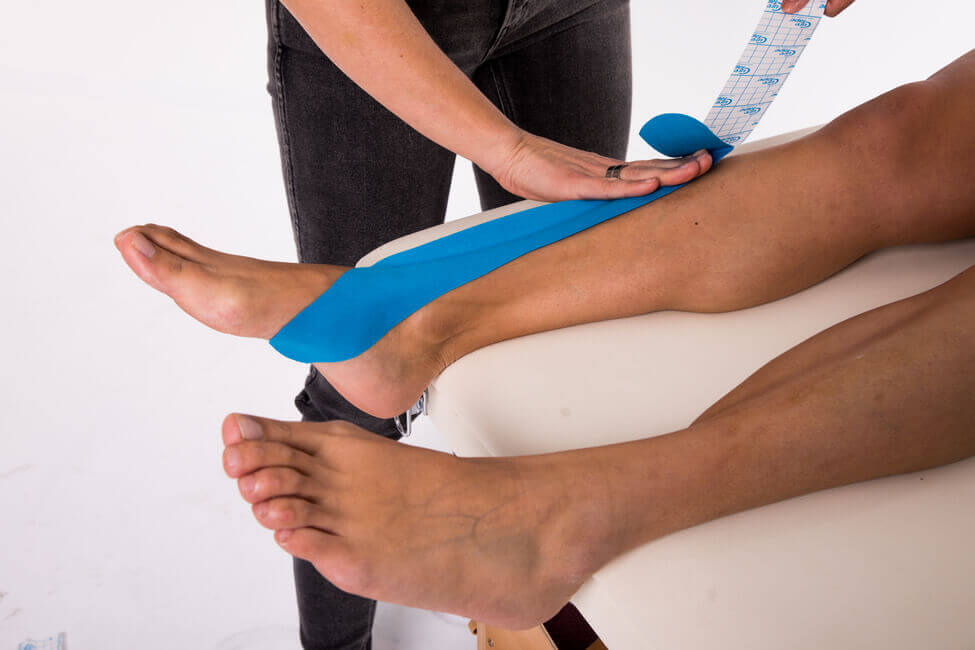
As part of a treatment, a sedative tape with slight stretching (10-15%) can be applied to the anterior tibial muscle.
– Stress fracture of the bone (fibula or tibia)
As a result of overburdening (often from excessive running and jumping), a partial bone fracture may occur. It often starts with a dull ache during loading but can cause extreme pains throughout the day. A bone scan or X-ray can show the fracture.
How to tape Medial Tibial Stress Syndrome
This is a condition that causes pain on the inside of the shin (the front of the leg, between the knee and the ankle). It is an injury caused by overloading the lower leg and is common among runners, athletes, military personnel and people who play a lot of jumping sports.
A tape combination that can be used in cases of osteoporosis can be seen in the instruction video on this page. Overloading of the posterior tibial muscle and/or the soleus muscle cause the complaints. In the video, a sedative tape (CureTape Art – Tattoo) is applied over the posterior tibial muscle with about 10-15% stretch. Then, depending on the size of the area, one or two Y-tapes are applied with a fascia technique (jigging technique). This technique is used to influence the direction of movement. Pay attention that the beginning of the Y-tape is applied exactly at the point of pain and then jig the two strips with approximately 40% stretch.
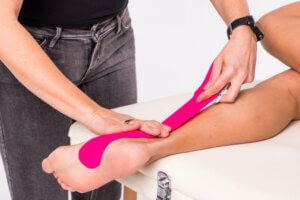
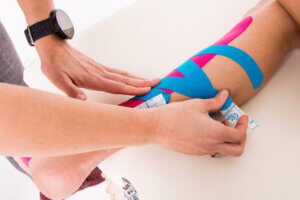
Study Comparing Kinesio Taping and Orthotics for Shin Splints:
Research conducted by Shaji J. Kachanathu et al. in The Journal of Sports Medicine and Physical Fitness in 2017 looked into the effectiveness of two treatments for shin splints. They divided 40 individuals with shin splints into two groups of 20 each. One group received anti-pronation Kinesio Tape, while the other group received standard orthotics. The study measured outcomes using three tests: VAS Pain score, Navicular Drop Test to assess pronation level, and a Hop Test for distance.
Results revealed that the group treated with Kinesiology Tape experienced significant improvements in pain levels and hop distance compared to the group using standard orthotics. Although both groups showed improvements, there was no significant difference in the Navicular Drop Test results between them. Overall, the study indicated that Kinesio Taping yielded better results in managing shin splints compared to standard orthotics.

Christina’s advice when taping your shins
When taping your shins, it’s crucial to choose a tape that provides strong adhesion and support. That’s why I recommend CureTape kinesiology tape. For regular use, CureTape Classic or Art is ideal. However, if you are being very active and move around a lot, opt for the extra sticky CureTape Sports variant!
Learn how to tape
- The Ultimate Taping Guide: Focuses on self-taping for the 30 most common injuries where taping provides support.
- Kinesiology Taping Method Manual: Designed for (para medical) professionals, covering basic taping techniques and various pathologies.
- Decompressive Taping Techniques Manual: Specifically focuses on lymphatic taping methods for decompression.
What are you waiting for? Order a copy today!
THYSOL is the manufacturer of the kinesiology tape brand CureTape. As CureTape, we have been training and supplying professionals for 25 years. And consumers now know how to find us too! By manufacturing all our tapes in our own factory, we can guarantee the best quality!
Please note that the indicated tape applications and information on our website about the possibilities with kinesiology tape have not yet been scientifically proven. The statements and examples mentioned are based on long-term experiences of patients and trained therapists.Contraindications not to tape: pregnancy, open wounds, broken bones, unexplained complaints, allergies and skin diseases, use of medication such as blood thinners, thrombosis and fever. Always apply tape in consultation with a specialist.

